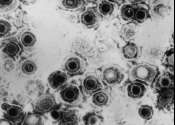How one photon becomes four charge carriers
Photovoltaics, the conversion of light to electricity, is a key technology for sustainable energy. Since the days of Max Planck and Albert Einstein, we know that light as well as electricity come in tiny, quantized packets ...









